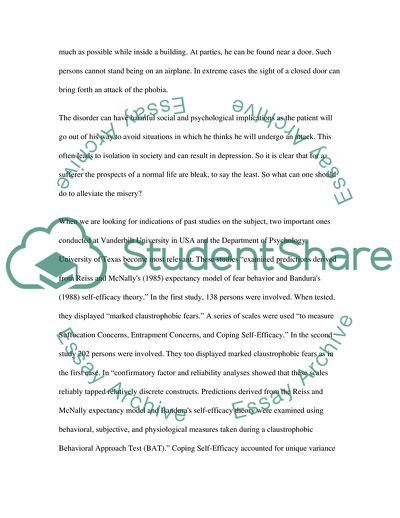Cite this document
(Drug Therapy vs. Behaviour Therapy to Treat Claustrophobia and Anxiety Essay, n.d.)
Drug Therapy vs. Behaviour Therapy to Treat Claustrophobia and Anxiety Essay. https://studentshare.org/psychology/1707139-research-study-comparing-the-different-forms-of-treatment-for-claustrophobia-and-anxiety-symptoms-drug-therapy-vs-behavior-therapy-or-a-combination-of-both
Drug Therapy vs. Behaviour Therapy to Treat Claustrophobia and Anxiety Essay. https://studentshare.org/psychology/1707139-research-study-comparing-the-different-forms-of-treatment-for-claustrophobia-and-anxiety-symptoms-drug-therapy-vs-behavior-therapy-or-a-combination-of-both
(Drug Therapy Vs. Behaviour Therapy to Treat Claustrophobia and Anxiety Essay)
Drug Therapy Vs. Behaviour Therapy to Treat Claustrophobia and Anxiety Essay. https://studentshare.org/psychology/1707139-research-study-comparing-the-different-forms-of-treatment-for-claustrophobia-and-anxiety-symptoms-drug-therapy-vs-behavior-therapy-or-a-combination-of-both.
Drug Therapy Vs. Behaviour Therapy to Treat Claustrophobia and Anxiety Essay. https://studentshare.org/psychology/1707139-research-study-comparing-the-different-forms-of-treatment-for-claustrophobia-and-anxiety-symptoms-drug-therapy-vs-behavior-therapy-or-a-combination-of-both.
“Drug Therapy Vs. Behaviour Therapy to Treat Claustrophobia and Anxiety Essay”. https://studentshare.org/psychology/1707139-research-study-comparing-the-different-forms-of-treatment-for-claustrophobia-and-anxiety-symptoms-drug-therapy-vs-behavior-therapy-or-a-combination-of-both.


